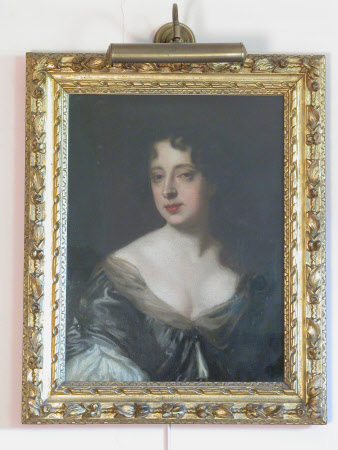Barbara Villiers, Countess of Castlemaine and Duchess of Cleveland (1640-1709)
after Sir Peter Lely (Soest 1618 – London 1680)
Category
Art / Oil paintings
Date
1700 - 1799
Materials
Oil on canvas
Measurements
780 x 650 mm
Place of origin
England
Order this imageCollection
Greys Court, Oxfordshire
NT 196013
Summary
Oil painting on canvas, Barbara Villiers, Countess of Castlemaine and Duchess of Cleveland (1640-1709), after Sir Peter Lely (Soest 1618 – London 1680). Half-length portrait turned slightly to the right with her head turned slightly to the left, gazing at the spectator. She wears a low-cut black dress with brown and white edging, and has long, curly brown hair down her back. Painted with a dark background. Framed in ornate gesso frame with leaves and flowers. After an original painting in a private collection.
Provenance
Gifted to the National Trust by Sir Felix and Lady Elizabeth Brunner, along with Greys Court House and Estate, 1969.
Credit line
Greys Court, The Brunner Collection (National Trust)
Marks and inscriptions
On reverse of frame: 'Wyatt...High Street Oxford'.
Makers and roles
after Sir Peter Lely (Soest 1618 – London 1680), artist

